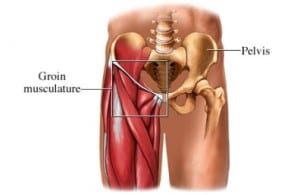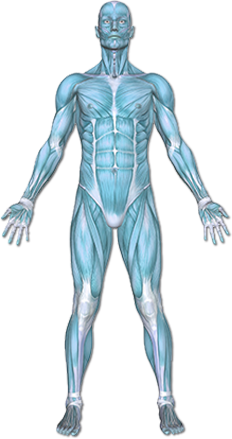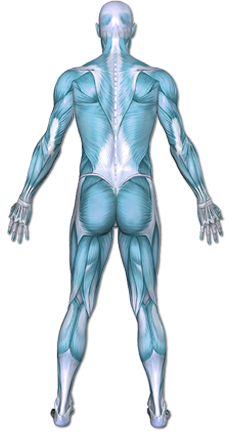Groin Strain
A groin strain is a partial or complete tear of the small fibers of the adductor muscles. The adductors are a group of muscles located on the inner side of the thigh. They start in the groin area and run down the inner thigh to attach to the inner side of the knee.
Groin strain is a common sports-related injury. Treatment depends on the severity of the strain.


Copyright © Nucleus Medical Media, Inc.
This content was created using EBSCO’s Health Library
A groin strain can be caused by:
- Stretching the adductor muscles beyond the amount of tension they can withstand
- Suddenly putting stress on the adductor muscles when they are not ready for stress
- Overusing the adductor muscles over time
- Receiving a direct blow to the adductor muscles
This content was created using EBSCO’s Health Library
Factors that may increase the chance of developing a groin strain include:
- Participation in sports that require bursts of speed. This includes track sports like running, hurdles, or long jump. Other sports include basketball, soccer, football, or rugby.
- Previous strain or injury to the area
- Muscle fatigue or weakness
- Tight groin muscles
- Poor conditioning
- Imbalance of musculature
- Abnormality of bone structure
This content was created using EBSCO’s Health Library
Symptoms may include:
- Pain and tenderness in the groin area
- Stiffness in the groin area
- Weakness of the adductor muscles
- Bruising in the groin area if blood vessels are broken
- Popping or snapping sensation as the muscle tears
This content was created using EBSCO’s Health Library
The doctor will ask about your symptoms and medical history. A physical exam will be done. Most groin strains can be diagnosed with a physical exam. The doctor may want images of the area if severe damage is suspected. Images may be taken with MRI. Muscle strains are graded according to their severity:
- Grade 1—Some stretching with micro-tearing of muscle fibers.
- Grade 2—Partial tearing of muscle fibers.
- Grade 3—Complete tearing of muscle fibers. This may also be called a rupture or avulsion.
This content was created using EBSCO’s Health Library
Treatment will differ depending upon the severity of the injury. It is important to rest following the injury to allowed the injured muscle to properly heal. Activities that cause pain should be avoided. Once released for activity, a physical therapist can help expedite the recovery. Physical therapy treatment may include:
- Stretching: Light stretching is helpful, and should not be painful.
- Ice: The use of ice is typically indicated within the first 48-72 hours after injury, and then after vigorous activities. Ice will help calm the inflammatory response and stimulate blood flow to the area.
- Heat: Before activities, gentle heating can help loosen the muscle. Apply a heat pack to the groin prior to stretching or exercising. As a general rule of thumb, remember to heat before, and ice after.
The physical therapist will design a comprehensive rehabilitation program that may expedite recovery. The program may include modalities such as ultrasound, therapeutic massage, manual therapy and a specific exercise program. See a physician to determine if these would be appropriate for your condition.
This content was created using EBSCO’s Health Library
To help reduce the chance of getting a groin strain, take the following steps:
- Keep the adductor muscles strong to absorb the energy of sudden physical stress
- Learn the proper technique for exercises and sports
- Warm up the muscles slowly and stretch them properly
This content was created using EBSCO’s Health Library
This content was created using EBSCO’s Health Library


